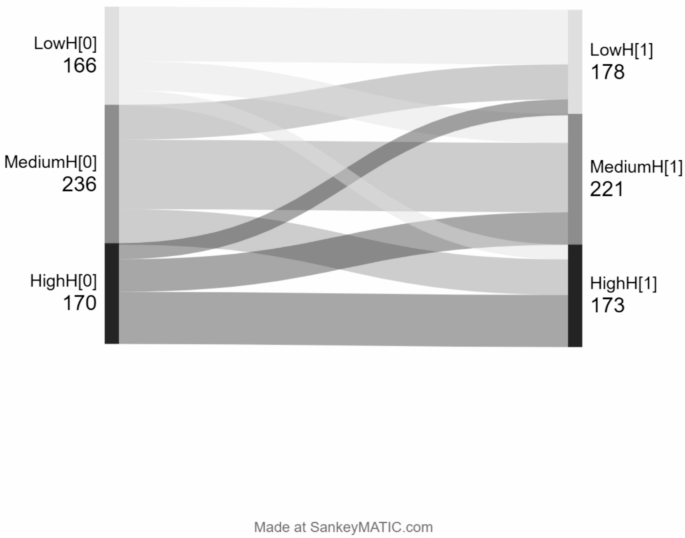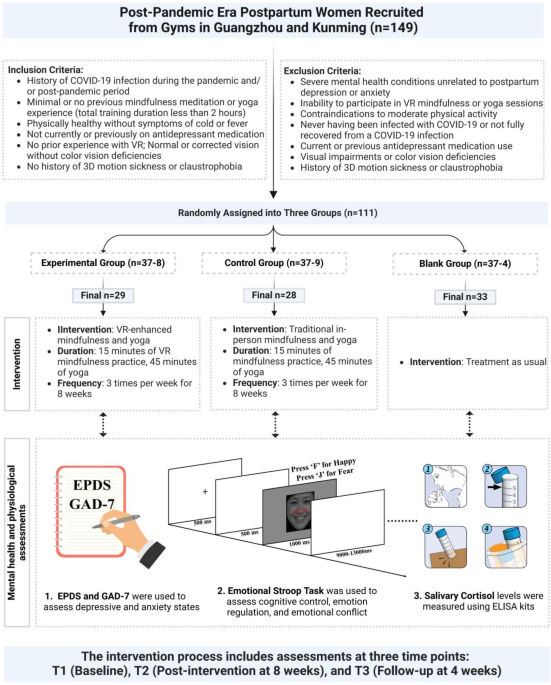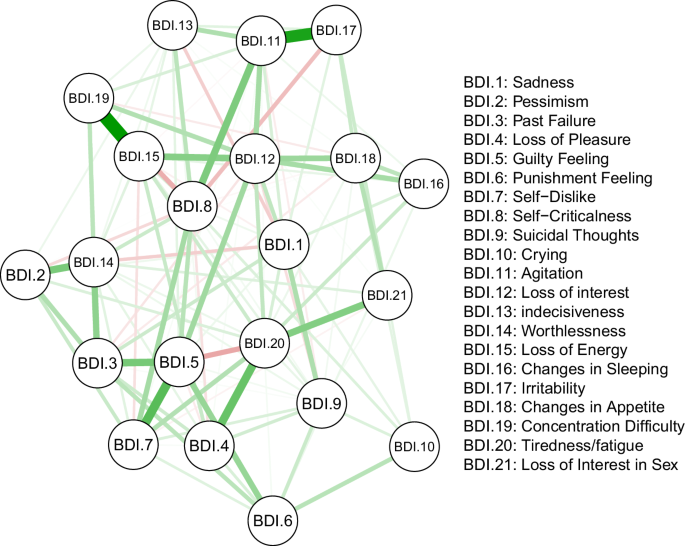BMC Public Health volume 25, Article number: 1181 (2025) Cite this article
Suicide attempts are critical predictors of suicide. Developing typologies of suicide attempt may indicate new prevention strategies, which have not been investigated by comparing developed and developing countries. Therefore, we aimed to explore the subtypes of suicide attempt and to compare the characteristics of these subtypes between developed and developing countries.
This study included 2046 British and 4238 Chinese men aged 18 − 34 years old in households. Hierarchical multinomial regression models were performed to investigate associated factors of suicide attempt. Latent class analysis was employed to identify subtypes of suicide attempt.
We found that anxiety and psychosis were independently associated with suicide attempts among British and Chinese young men, while depression was independently associated with suicide attempts only among British young men. Three latent classes of suicide attempt were identified: depressed/anxious subtype was robust across the Eastern and Western cultural contexts; no psychiatric morbidity subtype featured by weakened social bonds was significant more prevalent among Chinese young men attempted suicide, whereas impulsive, trauma, psychopathology subtype was significant more prevalent among British men attempted suicide.
These differences of attempted suicide appeared to result from the distinct social factors in China and the UK. Weakened social bonds could be a new intervention target for Chinese young men attempted suicide, whereas chaotic lifestyles for that of British young men attempted suicide.
Suicide accounts for 1.4% of all deaths worldwide and is the fourth leading cause of death between 15 and 29 years [1]. Suicide attempt is a key predictor of future suicide and strongly associated with depression, psychosis, anxiety [2,3,4,5], addictive disorders [6], certain social-demographic factors, including educational level [7, 8], and traumatic life events [9]. Risk factors for suicide attempt differ between Eastern and Western countries, with life stress and low social-economic status thought more associated with suicide in Eastern than in Western countries [10,11,12]. This could mean differing etiological mechanisms and need for differing prevention strategies. Thus, the difference of suicide attempt between Eastern and Western countries needs to be further explored.
Most cross-national studies have been conducted in neighbouring countries, such as the Western Pacific Region or Europe [7, 13,14,15]. Cross-national studies carried out in very different cultural settings may help in providing more comprehensive understanding of etiological mechanisms to aid policy-making for prevention, and also help in specifying whether the same principles apply globally [10]. For example, should China apply the same principles to prevention as in Europe and North America? Or are there etiological mechanisms that are specific to China requiring specific, culturally related interventions?
A key research problem when comparing different countries and impact of cultural backgrounds is the considerable heterogeneity between different studies [16, 17]. Few comparisons between Eastern and Western countries have used similar methods or attempted to control for similar confounders. This could substantially reduce effect size estimates of associations between suicide attempts and studied risk factors and give rise to error when making comparisons. We are not aware such an approach has been used in any previous cross-cultural comparisons of suicide attempts in Chinese and British population.
The sex ratio of suicide rate has changed inversely in recent years in China [18,19,20]. Between 2009 and 2011, there was a higher suicide rate among young men compared to young women under 35 years old [19]. The male: female ratios of age-standardized suicide rates had increased to 1.56 in 2017 in China [21]. This increase among young men indicates the importance of focusing on this young male subgroup in China to investigate what factors have contributed to the suicide attempt of males. However, suicide among young men has received less attention than among women.
We aim to compare prevalence and associated factors for suicide attempts between young men in China and Britain using the same questionnaires and a similar community-based random sampling method, and then test whether subtypes of suicide attempts can be identified according to latent classes of associated factors in a combined cross-national sample.
The survey in Great Britain was carried out in 2011 based on random location sampling (Figure S1). Individual sampling units (census areas of 150 households each) were randomly selected from British regions in proportion to their population to derive a representative sample of young men 18–34 years from England, Scotland, and Wales. More details of the sampling procedures have been described in previous study [22]. The survey in Chengdu, China, was conducted in two waves in 2012 and 2013 based on random location sampling, as used in the British survey, using a similar method quota sampling. We applied a multi-stage stratified random sampling method to divide Chengdu city and surrounding rural areas into three concentric circles according to economic level: (1) central city areas; (2) the suburbs; (3) rural areas. Our sampling strategy differs depending on the three concentric circles and the administrative organization of the household (Figure S1), and more details were presented in our previous studies [23]. In the survey, 4238 Chinese young men were selected and interviewed. This survey was conducted by trained interviewers who provided pencil and paper questionnaires to participants and retrieved after completion (about 40 min). The self-administered questionnaire used in the British survey was translated into Mandarin, then independently back-translated into English to ensure equivalence with the English version. More details of the sampling procedures have been described in previous study [24].
The authors assert that all procedures contributing to this work comply with the ethical standards of the relevant national and institutional committees on human experimentation and with the Helsinki Declaration of 1975, as revised in 2008. This study was approved by the Medical Ethics Committee of Sichuan University (No: 2011003). Written informed consent was provided by all the participants during data collection.
Socio-demographic variables included age, ethnicity (Han Chinese or British white majority or ethnic minority), employment status, education level, living alone or not, and no close relationship. White British was identified as majority, and others were identified as minority in UK. Ethnic Han was identified as majority, and other ethnicities were identified as minority in China. Education level was identified by “at what age did you finish your full-time education?”.
Attempted suicide was reported in response to ‘Sometimes when we are feeling very unhappy or hopeless, we may get thoughts of harming ourselves. Have you ever tried to kill yourself/made a suicide attempt?’ and coded yes, no, or don’t know.
The Psychosis Screening Questionnaire (PSQ) was used to screen participants for psychosis, and criteria were met when positive items ≥ 3 [25]. The PSQ had a positive predictive value of 91.2% and a negative predictive value of 98.4% [24, 25]. The Hospital Anxiety and Depression Scale (HADS) was used to screen anxiety and depressive disorders with the criteria of score > 11 in the past week [26], with the Cronbach’s alpha coefficient of 0.80 and 0.81 for anxiety subscale and depression subscale, respectively [27]. The alcohol use disorders identification test (AUDIT) with a score of ≥ 20 was used to identify alcohol dependence. The drug use disorders identification test (DUDIT) with a score of ≥ 6, was used to identify drug misuse disorder. The Cronbach’s alpha of the AUDIT and DUDIT was 0.93 and 0.80, respectively [28, 29].
Child maltreatment was screened by asking “Have you ever suffered from any of these problems or events before the age of 16 (bullying, witnessing violence in the home, witnessing parents/careers fighting, sexual abuse/assault, physical abuse, neglect, serious/life threatening injury)?” Child maltreatment was identified positive if any event was endorsed.
Adult traumatic events were screened by asking “Have you ever suffered from any of these problems or events since the age of 16 (been injured as a result of physical attack, a victim of stalking, violence at work, domestic violence in the home from a partner, sexual assault, serious/life threatening injury, separation due to marital difficulties or breakdown of a steady relationship, death of your husband/wife or partner or child, being fired or made redundant, homelessness, serious money problems, and made bankrupt)?”. Traumatic events were identified as positive if any event was endorsed.
Physical illness/disability was screened by asking “Do you have any longstanding (1 year or more) physical illness(es) or physical disabilities?”
Impulsivity was identified by asking “Now thinking of the time, since you were 15, do you often do things on the spur of the moment without thinking about how it will affect you or other people?” This question is the third question of antisocial personality disorder from the Structured Clinical Interview for DSM-IV Axis II disorders (SCID-II) screening questionnaire. Participants would be identified as having impulsivity characteristics when the answer was ‘yes’.
We used logistic regression to explore associations between each variable and suicide attempt among British and Chinese men adjusted for age. If the association between variable and suicide attempt was significant at an alpha level of 0.05, it was selected and then entered in subsequentmultivariate logistic regression under mutual adjustment to identify factors associated with suicide attempt according to nationality. Variables associated with suicide attempt in multivariate logistic regression were included in following analysis.
Then, hierarchical multinomial regression models with independent variables of suicide attempts were used to investigate (1) whether nationality was independently associated with suicide attempt, (2) the extent to which variables affected associations between suicide attempt and nationality, stepwise. Six regression models were applied to adjust for covariates: model 1, without adjustment; model 2, adjusted for demographic and social factors; model 3, model 2 with additional adjustment for traumatic factors; model 4, model 3 with additional adjustment for impulsivity; model 5, model 4 with additional adjustment for addictive behaviours; model 6: model 5 with additional adjustment for psychiatric disorders. Change in magnitude of association between suicide attempt and nationality was quantified using the percentage explained by each category of variables: (Bn - Bn−1)/B1. Bn is the B coefficient of multinomial regression model N. Bn−1 coefficient is the B coefficient of multinomial regression model N-1. B1 coefficient is the B coefficient of multinomial regression model 1.
Latent class analysis (LCA) was conducted to identify homogeneous subgroups based on associated variables for suicide attempt previously identified by multinomial regression. Models with numbers of classes from 2 to 5 were evaluated to determine optimal number of latent classes. Model selection was based on information criteria, Lo-Mendell-Rubin test (LMRT), and entropy. Information criteria include the Akaike’s information criterion (AIC), Bayesian information criterion (BIC), and sample-size adjusted BIC (aBIC), where lower values indicate better model fit. Entropy with value > 0.80 indicates that the accuracy of classification is above 90% [30]. The LMRT and the Bootstrap likelihood ratio test (BLRT) with p-value < 0.05 indicate significant improvement of model fit compared to the model with one less class [31]. The local independence assumption was tested by log odds ratio check using z-value of ± 1.96 as standard for each included variable [32, 33]. Finally, we drew line chart to present model conditional probabilities for each class across countries, reflecting the relationship between variables and latent classes. Univariate logistic regression was used to find which variable differed significantly between the two countries in each class.
All tests were two-tailed and an alpha level below 0.05 was considered statistically significant. LCA was carried out in Mplus 8.3. All other analyses were performed with the statistical package SPSS (version 25.0). Missing data for each variable are listed in supplemental materials, Table S1.
The cross-national sample included 2046 British (age, Mean ± SD: 24.76 ± 5.01) and 4238 Chinese (age, Mean ± SD: 26.65 ± 4.96) young men aged 18 − 34 years old (t = 14.03, p < 0.001). Prevalence of suicide attempt was higher among Chinese (8.3%, 95% CI: 7.4−9.2%) than British (6.6%, 95% CI: 5.5−7.7%) young men (OR: 1.27, 95% CI: 1.03–1.57, p = 0.025).
Following adjustment for age, suicide attempt among both Chinese and British young men were associated with lower education level, physical illness, child maltreatment, traumatic events, impulsivity, alcohol dependence, drug misuse, anxiety disorder, depression and psychosis (p < 0.05). Unemployment showed associations only among British men (AOR, 95% CI: 1.95, 1.31 − 2.92, p < 0.001); living alone (AOR, 95% CI: 1.70, 1.24 − 2.33, p < 0.01) and no close relationship (AOR, 95% CI: 1.38, 1.07 − 1.77, p < 0.05) showed associations only among Chinese men. Ethnicity, unemployment, education, adulthood traumatic events, drug misuse and anxiety were associated with nationality among young men attempted suicide (p < 0.05). More details were listed in Supplemental Materials (Table S2).
After including all significant associated factors of suicide attempt listed in Table S2, unemployment, education, impulsivity, alcohol dependence, and drug misuse were no longer significantly and independently associated with suicide attempt among British men. Education, living alone, adult traumatic events, drug misuse and depression were no longer significantly and independently associated with suicide attempt among Chinese men. Anxiety was no longer associated with nationality among young men attempted suicide (Table 1).
Chinese men were more likely to attempt suicide than British young men (Table 2), and this association increased after adjusting social-demographic factors (model 2), stress factors (model 3), impulsivity (model 4), and addictive disorders (model 5), but was attenuated by psychiatric disorders (model 6).
Goodness of fit indices from 2-class to 5-class solutions are shown in Fig. 1a, b. The AIC, BIC, and aBIC values of 3-class solution were lower than that of the 2-class solution. There was a significant difference between 2-class solution and 3-class solution, but not between 3-class solution and 4-class solution. Meanwhile, entropy of the 3-class was higher than that of 4-class, indicating that 3-class solution had better goodness of fit compared with other solutions. Furthermore, nine of eleven variables met the assumption of local independence the 3-class solution met the local independence test (more details listed in Table S3).
Latent classes analysis. (a) Goodness of fit for latent class models (n = 458). (b) Comparision of classes’ probability distribution between British and Chinese young men attempted suicide. (c) Probability distribution of classes in traumatic experiences, psychiatric and addictive disorders morbidity. Class 1: Depresssed/Anxious subtype, Class 2: No psychiatric morbidity subtype, Class 3: Impulsive, trauma, psychopathology subtype. AIC: The Akaike’s Information Criterion; BIC: The Bayesian Information Criterion; aBIC: The sample-size–adjusted BIC; LMRT: The Vuong-Lo-Mendell-Rubin Likelihood Ratio Test; BLRT: The Bootstrap Likelihood Ratio Test; BRT: British; CHN: Chinese; NS: not significant
The rate of Class 1 did not differ significantly between British (32, 24.8%) and Chinese (89, 27.1%) young men attempted suicide (OR 95% CI: 0.65, 0.38–1.11, p > 0.05), while Chinese young men attempted suicide were more likely to be classified in Class 2 (CHN: 163, 49.5%, BRT: 38, 29.5%, OR 95% CI: 2.35, 1.52–3.64, p < 0.001) and less likely to be classified in Class 3 than British young men young men attempted suicide (CHN: 77, 23.4%, BRT: 59, 45.7%, OR 95% CI: 0.36, 0.24–0.56, p < 0.001).
Figure 1c presents probabilities of response for factors included in 3-class solution. Class 1 included 121 (26.4%) young men with low endorsement of child maltreatment, adulthood traumatic events, drug misuse and high endorsement of anxiety, and was labelled “depressed/anxious”. The Class 2 was labelled “no psychiatric morbidity”, and included 201 (43.9%) men with no endorsement of psychiatric morbidity, but medium-level endorsement of child maltreatment and no close relationship. The Class 3 included 136 (29.7%) men with high endorsement of child maltreatment, adulthood traumatic events, impulsivity and anxiety, which was labelled “impulsive, trauma, psychopathology”.
Table 3; Fig. 1d, e, f illustrate differences of conditional probability in each class between British and Chinese men with suicidal attempt. Compared to British, Chinese men showed lower prevalence of ethnic minorities and unemployment, in each class. In Class 1, Chinese men had higher prevalence of an older (25–34 years) age group but lower percentage of drug misuse. In Class 3, more Chinese men screened positive for psychosis and more British men for drug misuse.
This study is the first study to set a typology of suicide attempt across the Eastern and Western countries among young men aged 18–34. Anxiety and psychosis were closely correlated with suicide attempt among both British and Chinese young men, which could explain the subtype named “depressed/anxious” was common among young men attempted suicide in both countries. By contrast, social-demographic factors, traumatic events, impulsivity, and addictive disorders enlarged the difference of suicide attempt between Chinese and British young men. This was consistent with the finding of LCA that “no psychiatric morbidity” subtype was more common among Chinese young men attempted suicide, while “impulsive, trauma, multiple psychopathology” subtype was more common among British young men attempted suicide. Therefore, our study revealed a robust typology that applied to both countries, and the differences in prevalence of subtypes could aid to set different suicide intervention strategies in the Eastern and Western countries.
Higher prevalence of suicide attempts among Chinese men is consistent with previous studies showing developing countries have higher rates of suicide than developed countries [15]. Differences did not disappear following multiple adjustments, suggesting nationality would be an independent associated factor. The higher prevalence of suicide attempt among Chinese men was also higher than that reported in five low- and middle-income countries [34], which was consistent with WHO’s report that suicide rates among men have fluctuated in low- and middle-income countries in Western Pacific Regions [13]. The prevalence of suicide attempt among British young men was higher than Bromet’s study which reported that the lifetime prevalence of suicide attempt was 2.8% in a study across 19 countries from the World Health Organization (WHO) World Mental Health surveys throughout the world [35].
Some studies have reported a close relationship between depression and suicide attempts [2, 36], while others found this relationship varied by symptom severity, sex, and comorbid psychiatric disorders [36,37,38]. After adjustments, we found the association only among British men. This is consistent with a study conducted in rural China which found an association between depression and suicide attempts only among women [39].
We found a positive relationship between anxiety and suicide attempt among both Chinese and British men. This result was inconsistent with a cohort study which found the hazard ratios of anxiety was lower than that of depression [40], but consistent with a meta-analysis that found patients with anxiety were more likely to attempt suicide than patients without anxiety [41]. Most studies explored the relationship between anxiety and suicide attempt on the basis of depression. Placidi found the rate of suicide attempt in patient with depression was correlated with anxiety symptoms [5]. The rate of suicide attempt in depression patients with anxiety symptoms was approximately nine times higher than that in depression patients without anxiety symptoms [42]. Most previous studies adjusted demographic covariates while explore relationship between anxiety and suicide attempt, but rarely adjusted other psychiatric disorders, which could be the reason of some differences between this study and other studies. Recent studies have found that college students and patients with anxiety were more likely to attempt suicide than those with major depressive disorder [42, 43], our study conducted in community samples further support this finding. Our findings suggest that greater importance should be given to anxiety during clinical assessments and a mixed presentation of anxiety (Class 1) appeared to characterise many young men.
We also found psychosis was associated with suicide attempts among both British and Chinese young men, which was consistent with previous evidence that psychosis is a key associated factor of suicide attempt [37, 38, 40, 44, 45]. These results indicate the importance of screening individuals attempting suicide for characteristics of class 1 due to their high risk and need for urgent psychiatric treatment, including consideration of need for hospitalisation in severe cases.
Absence of psychiatric morbidity characterised Class 2 and was more prevalent among Chinese men who experienced traumatic events in adulthood. This pattern was reported in the past among young women in China, but is now less common [46]. This was consistent with a psychological autopsy study that found that the high suicide rate was related to high stress in the absence of mental disorders [46]. In contrast, British men were more likely to show features of impulsivity, lifetime trauma, and psychopathology, in Class 3. These results indicated that for Chinese men, interventions should concentrate on increasing resilience to cope with traumatic events. For British men, the additional importance of reducing misuse of drugs and alcohol.
More than half of Chinese men in class 2 were unable to develop a close relationship. These results imply fostering socio-emotional skills might be a target of suicide prevention. The fierce competition for education and employment in the general population can place a heavy burden on students necessary to continue the economic improvements that have transformed the economy. This situation might lead to the neglection of fostering skills to cope with pressure, which in turn reduces their ability to develop close relationships. Improving socio-emotional life skills, an effective, evidence-based WHO recommended intervention [47], may be a helpful intervention for some men in Class 2. Although China has not developed a regional or national plan for suicide prevention, psychological crisis centres have now been established, hand a hotline for obtaining psychological aid and accessing crisis intervention teams [13].
It was of interest that Chinese men with suicidal behaviour were less likely to be from an ethnic minority and unemployed than British men. Ethnic minorities in China are indigenous rather than predominantly migrants from the mid-20th century onwards, as in UK. There are also specific government policies, including an ethnic minority assistance plan, and economic and work assistance for low-income households.
This was a community-based survey and adopted the method of multi-stage random sampling, which avoided the selection bias in clinical sample surveys. The samples of this study were representative and sufficiently large to provide statistical power. Few studies have used the same research method to conduct investigations in Eastern and Western countries at the same time. Our research adopted the same research method, including the same questionnaire and diagnostic instruments. However, there are certain limitations. First, we conducted surveys in two countries, but China was much larger than the UK. Therefore, the survey of China was restricted to Chengdu City and certain semi-urban areas and rural villages located in the Western area of China. However, the samples were weighted to be representative of this area. Second, although the source of information was self-report and subjects may conceal their negative behaviours, such as substance use, we conducted anonymous survey to reduce the possibility of concealing information, thereby improving the reliability of the survey results. Finally, the diagnosis of psychiatric disorder was not confirmed by a psychiatrist. However, we used standardised self-report research instruments based on DSM-IV to improve diagnostic reliability.
Under the control of confounders, anxiety was associated with suicide attempt among young men in different cultural background. We have developed a typology of suicide attempts among young men and these appeared robust across two very different cultural contexts despite differences in prevalence in each location. These differences appeared to result from differences in prevalence of social associated factors in China and the UK, although these associated factors were generally similar. These finding imply that promoting mental health service could be a useful way to prevent suicide behaviour across countries, but China should also combine other measures according to the different feature of suicide.
The data that support the findings of this study are available from JM.H. and J.C., upon reasonable request.
- PSQ:
-
The Psychosis Screening Questionnaire
- HADS:
-
The Hospital Anxiety and Depression Scale
- AUDIT:
-
The Alcohol Use Disorders Identification Test
- DUDIT:
-
The Drug Use Disorders Identification Test
- SCID-II:
-
The Structured Clinical Interview For DSM-IV Axis II Disorders
- LCA:
-
Latent Class Analysis
- LMRT:
-
Lo-Mendell-Rubin Test
- AIC:
-
The Akaike’s Information Criterion
- BIC:
-
Bayesian Information Criterion
- aBIC:
-
Sample-Size Adjusted Bayesian Information Criterion
- BLRT:
-
The Bootstrap Likelihood Ratio Test
- OR:
-
Odds Ratio
- AOR:
-
Adjusted Odds Ratio
The authors would like to acknowledge the efforts of the research team and the kindness of the participants for their participation.
This work was supported by the National Institute for Health Research (NIHR) (grant numbers: RP-PG-0407-10500), the National Natural Science Foundation of China (no. 82302119), the National Postdoctoral Science Foundation of China (grant number: 2020TQ0219) and the Sichuan Science and Technology Program (grant number: 2023YFS0291). The funding sources had no role in the study design, in the interpretation of data, and in the writing of the manuscript.
This study was approved by the Medical Ethics Committee of Sichuan University (No: 2011003). The authors assert that all procedures contributing to this work comply with the ethical standards of the relevant national and institutional committees on human experimentation and with the Helsinki Declaration of 1975, as revised in 2008.
Not applicable.
The authors declare no competing interests.
Springer Nature remains neutral with regard to jurisdictional claims in published maps and institutional affiliations.
Open Access This article is licensed under a Creative Commons Attribution-NonCommercial-NoDerivatives 4.0 International License, which permits any non-commercial use, sharing, distribution and reproduction in any medium or format, as long as you give appropriate credit to the original author(s) and the source, provide a link to the Creative Commons licence, and indicate if you modified the licensed material. You do not have permission under this licence to share adapted material derived from this article or parts of it. The images or other third party material in this article are included in the article’s Creative Commons licence, unless indicated otherwise in a credit line to the material. If material is not included in the article’s Creative Commons licence and your intended use is not permitted by statutory regulation or exceeds the permitted use, you will need to obtain permission directly from the copyright holder. To view a copy of this licence, visit http://creativecommons.org/licenses/by-nc-nd/4.0/.
Chen, XC., Coid, J., Zhang, YM. et al. Psychiatric disorder, traumatic experience and social deprivation in distinct subtypes of suicide attempt: a cross-national study using latent class analysis. BMC Public Health 25, 1181 (2025). https://doi.org/10.1186/s12889-025-22159-8
Received:
Accepted:
Published:
DOI: https://doi.org/10.1186/s12889-025-22159-8













